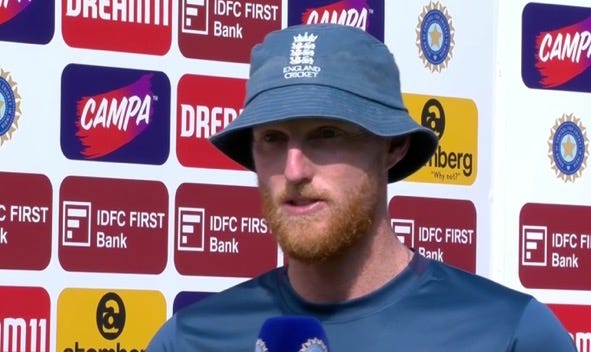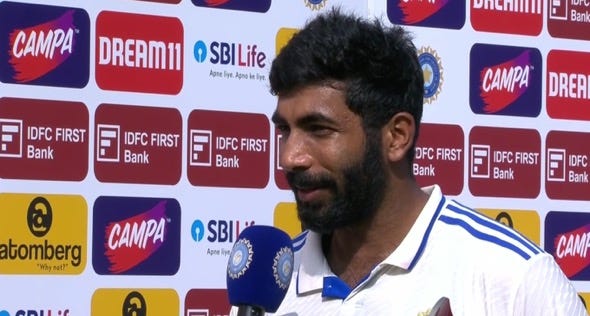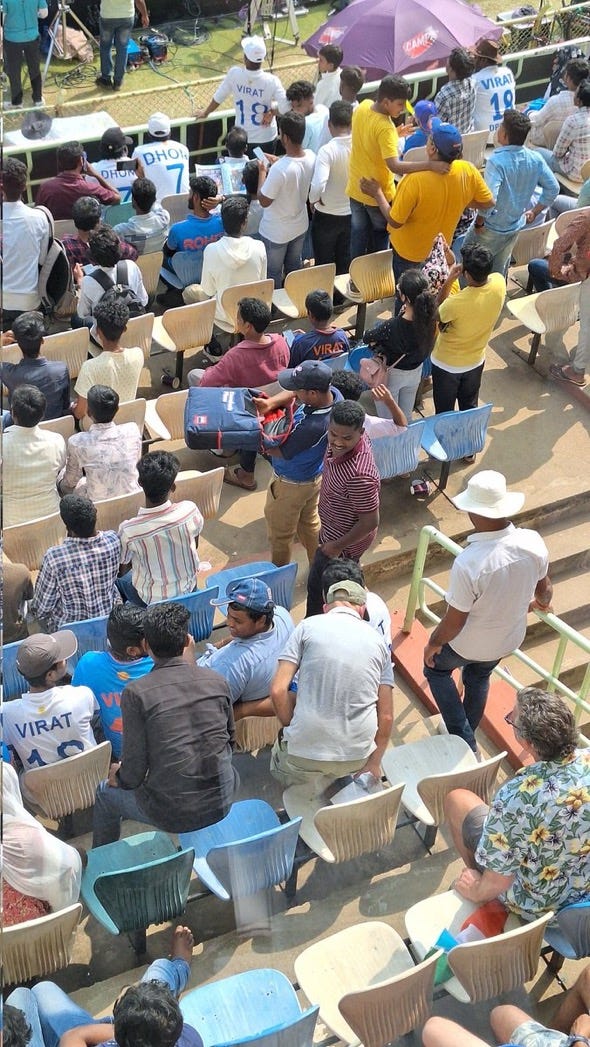‘Creating memories’ is a catchy tagline for Ben Stokes, and it works. He has spoken umpteen times about the regret of players looking ruefully back on their international careers and thinking: “I didn’t make the best of that, didn’t give it my best shot. I was too cautious.” T20 and Test cricket are coming closer all the time.
The most direct route into India’s Test team is through the IPL, it seems. Explosive individual performances in the world’s biggest T20 League, and second most valuable sporting league in the world, count for just as much, if not more, than seasons of hard toil and graft in the Ranji Trophy.
The required batting and bowling skills may be different for the two formats, but not quite as different as was initially believed, it seems. A solid batting defence and the ability to bowl a repetitive line and length to build pressure were prerequisites for Test success for over a century, but things are changing.
These days Test batters are quickly forgiven (if they are even criticised) for edging an airy drive into the slip cordon if they have already scored a run-a-ball 60. Bowlers conceding five runs an over, who might previously have been scorned, are praised if they have taken a couple of wickets.
‘Temperament’ is seen as more important than technique in India where a young batter like Sarfaraz Khan can’t break into the Test XI with a first-class average of 70 because he flunked in the IPL. Cricketers with more Razz and Mataz than runs and wickets catch the selectors’ eyes more readily.
The same may happen, quite soon, in South African cricket with the pre-eminence of the SA20. The current revolution in Test cricket thinking was started by England and is almost certain to catch on everywhere else. The traditional attraction of the attritional cricketer for the five-day game is fading quickly.
It is just one of the reasons South Africa should reassert itself at the forefront of the campaign for four-day Test matches. It would not even require the rewriting of any official legislation. Test matches can be as long as a host nation desires, or as short – provided they are sanctioned by the ICC. Lest anyone forget, South Africa hosted Zimbabwe for an official four-Test match seven years ago. It ended in less than two.
Four-day fixtures would allow three-match series to be completed in three weeks, each starting on Thursday and finishing on Sunday. The concept of finishing matches in empty venues on a Monday is horse-and-waggon logic. Test matches don’t last five days anymore, especially in South Africa.
If the ‘big-three’ still prefer to play their five-match series between each other over five-days, so be it. Only a tiny minority of those matches creep into a fifth morning anyway, but India, Australia and England can afford the financial indulgence, so let them. Common and financial sense dictates that everyone else should cut a day from Tests in order to play meaningful series.
Another fascinating and fast-developing change in the game’s landscape concerns which, and when players switch their format focus. Until now, the popular convention has been for the best players to retire from Test cricket in their 30s in order to ‘cash-in’ on the T20 circuit for the rest of their careers.
T20 Franchises, mostly IPL-owned, have moved away from this logic by signing up more and more young players before they are even in contention for Test selection, and more young players than ever are driven by the money. But here’s the ‘thing’. The majority of those players still dream about playing Test cricket, and even if they don’t, they still recognise it as the truest test and purest form of the game.
The time will come when the game’s most dynamic players will become very rich on instant noodles before switching, belatedly, to better food. It’s a far more natural and healthy order of events. Most people are more likely survive perfectly well on processed food and sugar in their early years before the need for a healthier diet later.
David Miller has enjoyed a magnificent international career and his only regret, even more than not winning a World Cup, is not playing a Test match. He has played more ODIs than anyone in history without experiencing the five-day format. Or four-day. There is an increasing number of ‘white-ball specialists’ in the world, but the most professional cricketers still know where the peak of the mountain is.
Test cricket has been in full bloom in recent weeks, and there are three more contests between India and England to look forward to over the next four weeks with their series tied at one game apiece. The one bud which failed to blossom was the Proteas, in New Zealand.
They are a doughty bunch of cricketers, they will continue to fight hard and they deserve respect and support, but they may always be remembered as the ‘victims’ of an administration which categorically refused to compromise on its sugar-first priorities. If and when the best young players decide to change diet in the years to come, it may too late.









